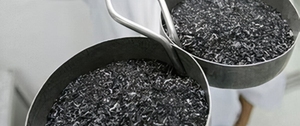Goodyear doubles use of rice husk silica
Nov 14, 2020
Goodyear expects to double its use of silica from rice hulls by 2021.
According to the UN, more than 700 million tons of rice are harvested worldwide every year. During its processing, the outer protective shell is separated from the rice grain and discarded. To reduce the amount of waste sent to landfills, rice hulls are often burned to generate electricity, leaving behind a silica-rich byproduct - Rice Hull Ash (RHA).
Goodyear began exploring the use of rice husk silica back in 2013. It was found that silica from rice wastes can improve key tire performance. The company claims that its addition increases the elasticity of the tire tread at low temperatures, reduces rolling resistance and improves the performance on wet road surfaces.
“When we look at alternative sources of raw materials, we first assess how they will affect the performance of the final product,” said Goodyear senior engineer Dr. Bob Woloszynek, who is developing new raw materials. “We were very pleased to find that in terms of performance, the rice husk material has the same properties as conventional sand silica.”
Silica, obtained from rice husk ash, is used in production at several Goodyear factories around the world. Goodyear is currently working closely with suppliers to further expand its use of rice husk silica. By 2021, the use of these raw materials should double, the company notes.
